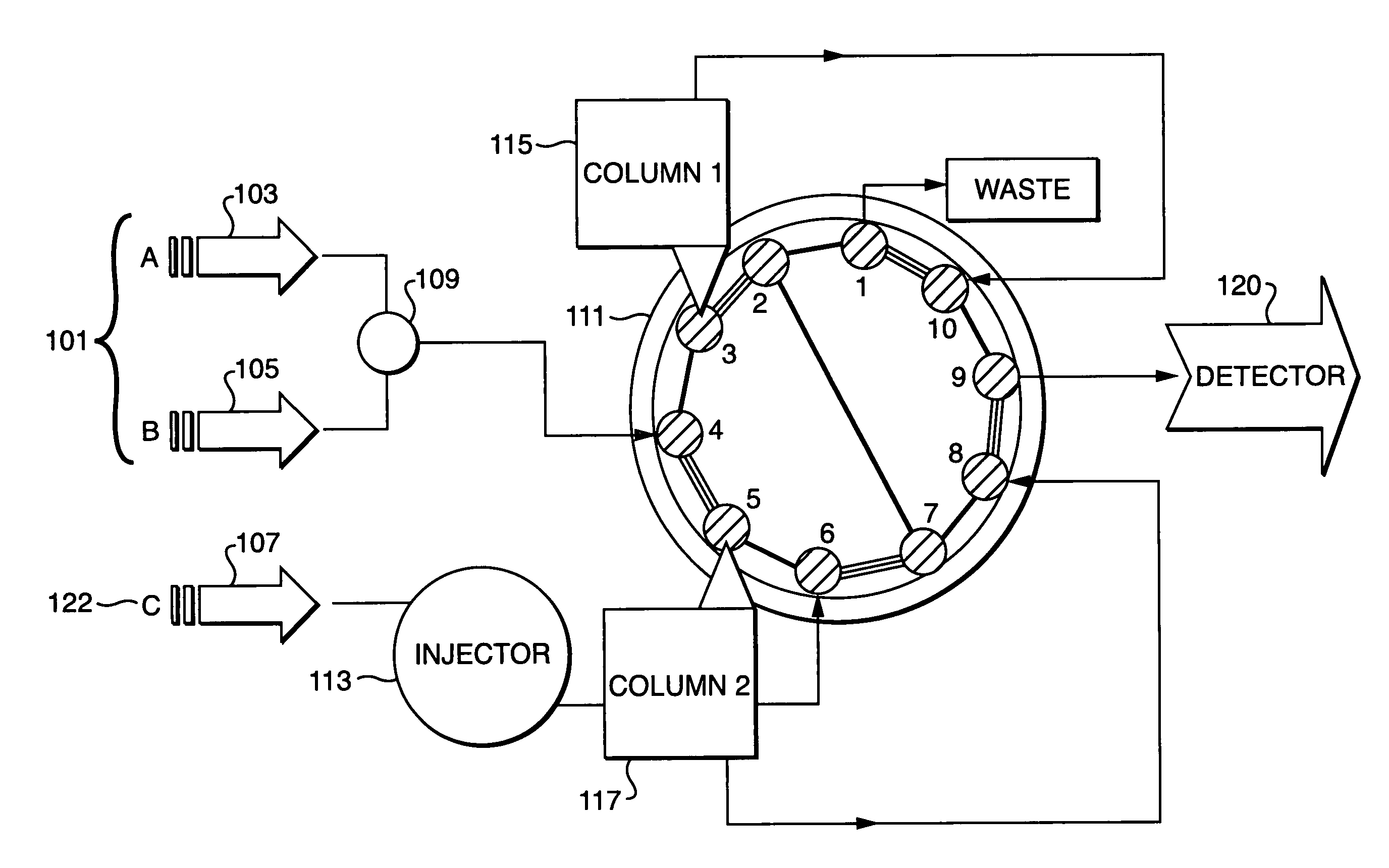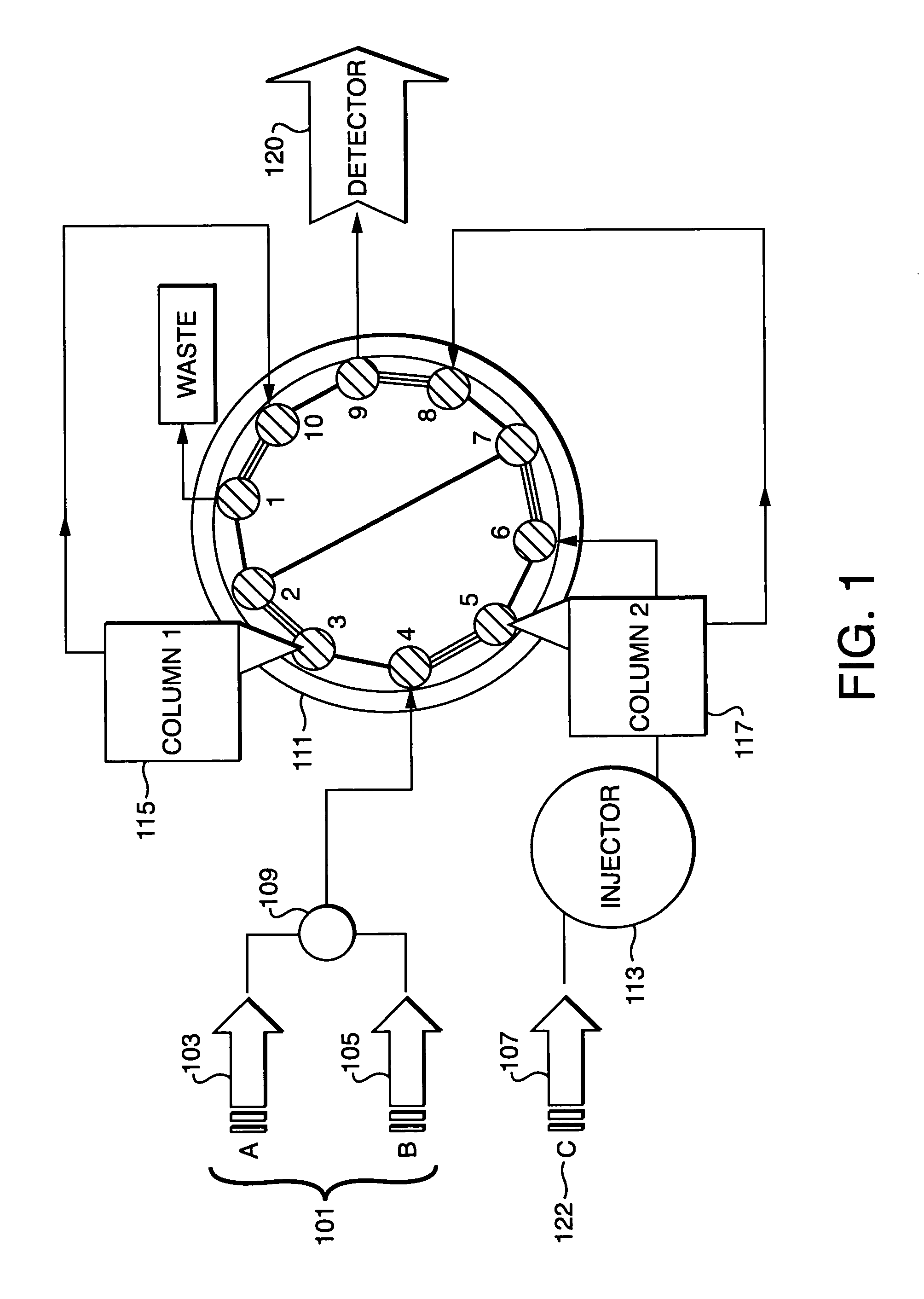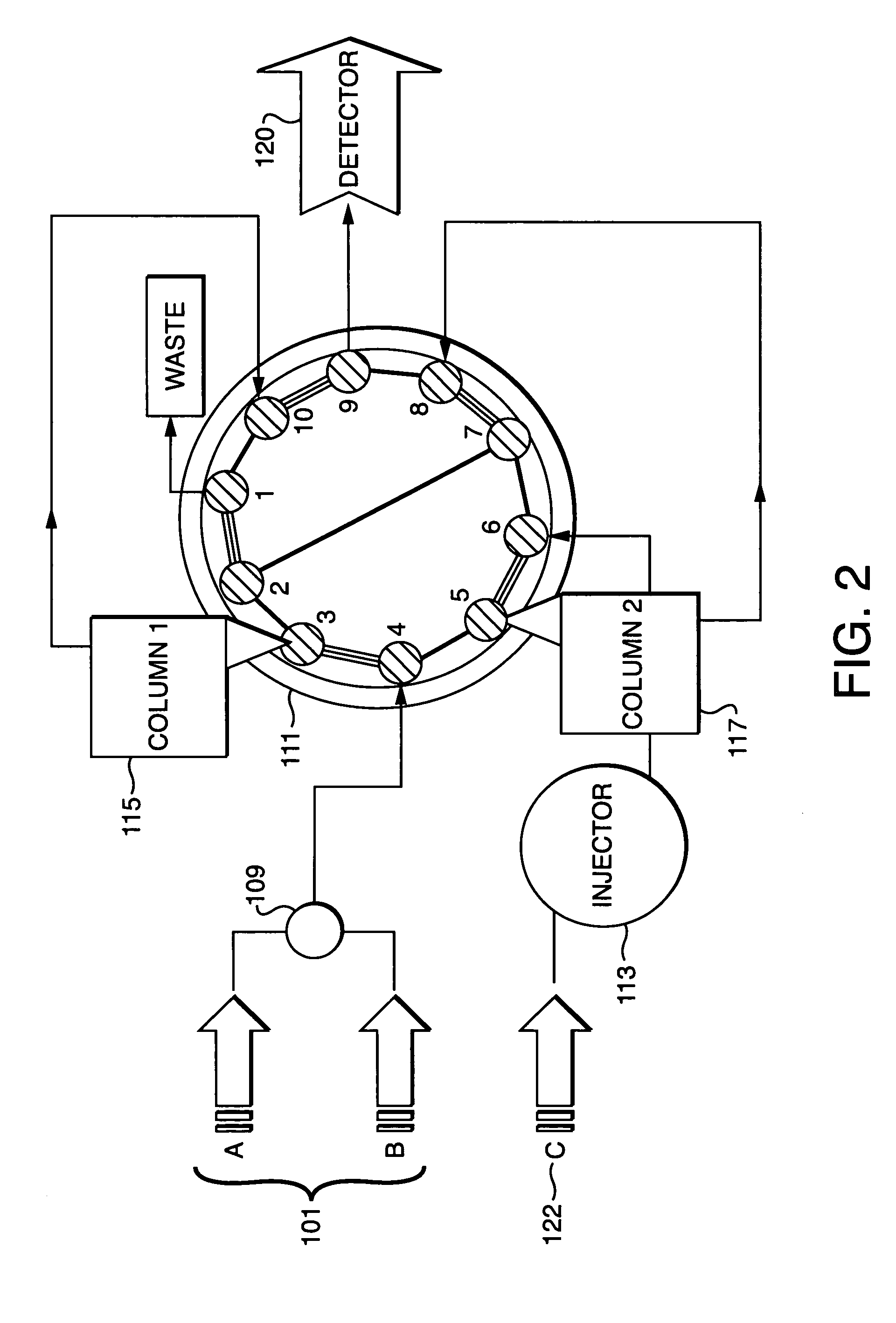Parallel concentration, desalting and deposition onto MALDI targets
a technology of parallel concentration and maldi target, which is applied in the field of automatic preparation of maldi target, can solve the problems of limited automated, cost-effective, reproducible, systematic analysis of proteins and other biomolecules present in biological samples, and inability to achieve protein digesting methods, etc., and achieves the effect of greater throughpu
- Summary
- Abstract
- Description
- Claims
- Application Information
AI Technical Summary
Benefits of technology
Problems solved by technology
Method used
Image
Examples
example 1
[0039]The performance of the inventive method was tested using several protein digests that were deposited on a MALDI target. Two samples were used to demonstrate the reproducibility of MALDI spectra, especially with the off-line parallel processing method of this instant invention. The two samples used were tryptic digests of Myoglobin and Glyceraldehyde-3-PO4-dehydrogenase. The samples were parallel processed according to the inventive method and the eluent from a reversed phase HPLC peptide elution of the two samples were continuously deposited onto a MALDI sample plate (pre-coated with αCHCA matrix). The results of this are shown in FIG. 5 the sample containing Myoglobin 501 and the sample containing Glyceraldehyde-3-PO4-dehydrogenase 502 were parallel processed showing good reproducibility of MALDI mass spectral response.
[0040]Turning to FIGS. 6A and 6B the mass spectrometer analysis of the two samples is depicted. The spectral analysis of the Myogoblin digest is shown in FIG. ...
PUM
| Property | Measurement | Unit |
|---|---|---|
| Length | aaaaa | aaaaa |
| Length | aaaaa | aaaaa |
| Capillary wave | aaaaa | aaaaa |
Abstract
Description
Claims
Application Information
 Login to View More
Login to View More - R&D
- Intellectual Property
- Life Sciences
- Materials
- Tech Scout
- Unparalleled Data Quality
- Higher Quality Content
- 60% Fewer Hallucinations
Browse by: Latest US Patents, China's latest patents, Technical Efficacy Thesaurus, Application Domain, Technology Topic, Popular Technical Reports.
© 2025 PatSnap. All rights reserved.Legal|Privacy policy|Modern Slavery Act Transparency Statement|Sitemap|About US| Contact US: help@patsnap.com



